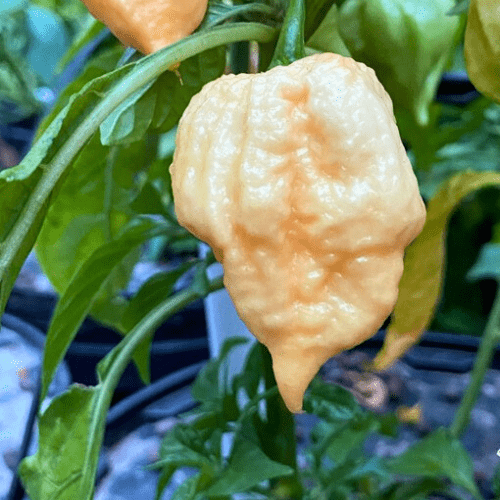Position:
Like most chilli plants, the Sugar Rush thrive in warm conditions, with plenty of sunlight, and need well-drained soil. They can be grown in containers or in garden beds. Plant about 45–60 cm apart to give them room to grow.
Soil:
The Sugar Rush chili prefers slightly acidic to neutral soil (pH 6.0 to 7.0) that drains well. You can improve drainage by mixing compost or organic matter into the soil.
The soil should be rich in organic material to provide the nutrients that the plant needs to grow strong and healthy.
Adding half a bag of our Volcanic Rock Dust (R25 per bag) and a bag of Superfrass (R25 per bag) will assist in rapid growth.
Watering
Keep the soil consistently moist but not waterlogged. Water the plants deeply, especially during dry spells.
Mulch
Use from 2 to 5 centimetres of pine bark mulch to protect the roots from UV damage and drying out. It retains moisture and maintains an optimal pH. Do not let the mulch touch the plant stem, as it may cause infection or rot.
Re-apply every 3-4 months.
Pruning
Prune the plants by removing any dead or damaged leaves. You can also pinch back the growing tips to encourage branching and more fruit production.
Fertilising
Use a balanced fertiliser (such as 10-10-10) during planting and again every 4-6 weeks throughout the growing season to encourage healthy growth.
Too much nitrogen can lead to excessive foliage growth with little fruit production.
Apply 1 teaspoon every 4-5 months of our slow-release all-plant fertiliser. The roots will absorb what they need.
Pests & Diseases
Watch for pests like aphids, spider mites, and whiteflies.
Super-hot peppers can be susceptible to fungal infections, especially in overly moist conditions. Ensure the plants have adequate air circulation, and avoid overhead watering.
Treat promptly or preferably use preventative measures by spraying with agricultural Neem Oil or Effective Microorganisms (EM Control)






